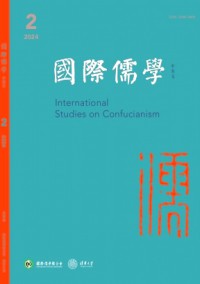英文名著
前言:想要写出一篇令人眼前一亮的文章吗?我们特意为您整理了5篇英文名著范文,相信会为您的写作带来帮助,发现更多的写作思路和灵感。

英文名著范文第1篇
[关键词]桑提亚哥;象征;马林鱼;大海;挑战
《老人与海》作者简介:欧内斯特・米勒尔・海明威(1899-1961),美国小说家。曾参加第一次世界大战,后担任驻欧洲记者,并以记者身份参加了第二次世界大战和西班牙内战。晚年患多种疾病,精神抑郁,于1961年自杀。他的早期长篇小说《太阳照样升起》(1927)《永别了,武器》(1927)成为表现美国“迷惘的一代”的主要代表作。20世纪三四十年代,他塑造了摆脱迷惘、悲观,为人民利益英勇战斗和无畏牺牲的反法西斯战士形象《第五纵队》,长篇小说《丧钟为谁而鸣》。50年代,塑造了以桑提亚哥为代表的“可以把他消灭,但就是打不败他”的“硬汉形象”(代表作《老人与海》1950)。1954年获诺贝尔文学奖。海明威是美利坚民族的精神丰碑。
海明威出生在美国伊利诺斯州芝加哥郊外橡树园镇一个医生家庭。他的父亲酷爱户外活动,他的母亲喜爱文学,这一切都对海明威日后的生活和创作产生了巨大影响。海明威毕业后一面当《星报》记者,一面写小说。第一次世界大战爆发后,他想亲临战场感受战争,于是加入美国红十字会战场服务队,投身意大利战场。大战结束后,海明威获得中尉军衔。伴随荣誉的是他身上237处的伤痕(被炸弹弹片嵌入身体留下的)和赶不走的恶魔般的战争记忆。
《老人与海》这部小说是根据真人真事写的。1930年,海明威乘的船在暴风雨中遇险,老渔民格雷戈里奥・富恩特斯搭救了他。从此,海明威与富恩特斯结下了深厚的友谊,并经常一起出海捕鱼。1936年,富恩特斯出海很远捕到了一条大鱼,但由于这条鱼太大,在海上拖了很长时间,结果在归程中被鲨鱼袭击,回来时只剩下一副骨架。当时这件事给了海明威很深的触动,使他产生了极强的创作欲。于是后来他就创作了这部被誉为“美国历史上里程碑式的32本书之一”的《老人与海》。
美国艺术史家贝瑞孙这样评价:“《老人与海》是一首田园诗,大海就是大海,不是拜伦式的,不是麦尔维尔式的,好比荷马的手笔:行文又沉着又动人,犹如荷马的诗。真正的艺术家既不象征化,也不寓言化――海明威是一位真正的艺术家―但是任何一部真正的艺术品都能散发出象征和寓言的意味,这一部短小但并不渺小的杰作也是如此。”
这部小说以摄像机般的写实手法记录了桑提亚哥(Santiago)老人捕鱼的全过程,塑造了一个在重压下仍然保持优雅风度、在精神上永远不可战胜的老人形象。起初,有一个叫明诺林的男孩跟他一道出海,可是过了40天还没有钓到鱼,孩子就被父母安排到另一条船上去了,因为他们认为孩子跟着老头不会交好运。第85天,老头儿一清早就把船划出很远,他出乎意料地钓到了一条比船还大的马林鱼。老头儿和这条鱼周旋了两天,终于又中了它。但受伤的鱼在海上留下了一道腥踪,引来无数鲨鱼的争抢。老人奋力与鲨鱼搏斗,但回到海港时,马林鱼只剩下一副巨大的骨架。孩子来看老头儿,说:“它没有打败你,它没有。”(“He didn’t beat you,Not the fish.”)
小说中人物很少,情节也简单,采用了简洁含蓄的风格,客观的白描手法极富象征意味。小说着力描写了桑提亚哥在同鲨鱼的斗争中表现出非凡的意志和勇气,成功地塑造了这一失败的英雄的典型形象,是作者创造的“硬汉性格”的继续与发展。《老人与海》中的形象具有很强的象征意蕴。他用大海象征变化无常的人类社会,用马林鱼象征人生的理想,用鲨鱼象征无法摆脱生活对人的打击,它会随时吃掉你的成功和幸福;而狮子则为英勇雄壮,能创造奇迹的象征,桑提亚哥则是人类中勇于与强大势力搏斗的“硬汉子”代表,他那捕鱼的不幸遭遇象征人类总是与厄运不断抗争。
桑提亚哥是个可怜的老头――看上去似乎是的。海明威以精炼的语言塑造了这个形象,但是并没有给予老人成功,却赋予老人在压力下优雅而坚韧的形象。桑提亚哥是海明威所崇尚的完美的人的象征:宽厚、仁慈、坚强、充满爱心,面对不可逆转的命运仍然是精神上的强者,保持了人的尊严和勇气。老人是“生命英雄”的象征,他敢于向人生的种种磨难宣战,向人的生命的极限挑战并超越它,从前所未有的角度展示了人的生命价值。在与大海、大马林鱼和鲨鱼的较量中,他以自信、勇敢,强悍的英雄形象奏响了一曲深沉低回的大提琴协奏曲。老人在海上和鲨鱼进行着殊死搏斗,面对鲨鱼不断残暴地摧残死去的大马林鱼,老人桑提亚哥“感到就像自己挨到袭击一样”,他想:“跟它们斗,我要跟它们斗到死。”这生动地展示了人与自然界的殊死搏斗,更加反衬出人的伟大。“我和你奉陪到死”――这个硬汉面对挑战这样说。桑提亚哥不断承受着不幸命运的挑战,而正是他的勇敢和强悍一次次地战胜了厄运。老人说“一个人并不是生来给打败的,你尽可能把他消灭掉,可就是打不败他”。透过老人与鲨鱼的搏斗,我们再次领悟到“生命英雄”在精神上是不可摧毁的,是人类取得美好未来的保证。
故事中出现了一个叫明诺林的男孩,在老人的故事里为什么有这个孩子的出现?年轻,象征着力量和希望,即便是老人,他的内心同样是年轻的。这个男孩起初是要跟老人学习捕鱼的技术的,但后来被他父母安排到别处了。在故事的结尾,当孩子看到那苍白的鱼骨架和老人那伤痕累累的双手时,“he started to cry,and an the way down the road he was crying”,孩子心痛的不仅是老人那双流过血的手,他心痛的是老人历尽艰险才得到的战利品竟然被鲨鱼咬噬得一干二净,更心痛的是老人在历经长达84天的凄惶失意极度紧张艰苦的考验后所换来的却只是更大的失望。孩子的“放声大哭”使读者产生强烈的听觉感,深深地撞击着读者的心弦。这哭声包含着孩子对老人深深的同情和无限崇敬。这哭声显然是孩子在老人的英雄气概感召下性格走向成熟的起点,象征孩子的回归。这一象征手法的处理昭示出“他是在通过一条相当新的路子返回到他的起点”,表达了作品的乐观主义倾向。
小说中有一个极其重要的象征物,就是桑提亚哥魂系梦萦的“那群狮子”。它代表旺盛的生命力和青春,象征着老人对力量的追求和对强者的向往,每次梦见“那群狮子”后都会给老人增添无穷的精神力量。小说的结尾“The old man was dreaming about the lions”――“那天下午,桑提亚哥在茅棚中睡着了,梦中他见到了狮子。”这是一个富有寓意的回声,体现了海明威的人生哲学与道德 理想,即不向命运低头,永不服输的斗士精神和积极向上的乐观人生态度。
小说中的大海除了是故事发生的地点外,还象征人生的搏斗场。海明威并没有只对大海进行客观的描写,有许多地方是通过桑提亚哥老人倾向性的回忆或者自言自语等形式叙述出来的。来看吧:“那有毒的水母是海里最欺诈成性的生物,但却是海龟的美食,海龟吃水母,鲨鱼吃海龟。”还有那“在阳光下闪出银白色光的金枪鱼跳得很远地捕食小鱼”,小鸟被老鹰追捕时发出“微弱而凄惨的叫声”,于是我们便看到一幅从海底到天空的巨型画卷,到处是强者的追逐,弱者的奔逃,到处都潜藏着杀机。这幅画卷所展现的是自然界中永恒的,真真切切的弱岗强食生存斗争的景象。
“一艘船越过世界的尽头,驶向未知的大海,船头上悬挂着一面虽然饱经风雨剥蚀却依旧艳丽无比的旗帜,旗帜上,舞动着云龙一般的四个字闪闪发光――超越极限!”作者海明威这样评价他的作品。
《老人与海》中展现了人的自信。桑提亚哥的自信是绝对自信,是不以环境变化而变化的自信,是不用与他人比较的自信。在书中这样写道:“老人的渔船上那破旧的帆布,就像是一面失败的旗帜,仿佛在宣告着老人永远都捕不到鱼的倒霉运气。”“他身上的一切都显得古老,除了那双眼睛,它们像海水一般蓝,是愉快而不肯认输的。”眼睛是心灵的窗户,这“海水一样蓝的眼睛”跟那象征着厄运的破帆相对照,揭示出了老人圣地亚哥绝不向命运屈服的性格特征。一切大风大浪都无法改变老人那双充满自信的眼睛。正是它,支撑着老人在大海中整整搏斗几天几夜,发挥出在他生命中的所有极限。他带给我们的是人类最高贵的自信!
台湾学者陈人孝曾经评价:“人可以失败,但不可以被击败,外在的肉体可以接受折磨,但是内在的意志却是神圣不可侵犯的,这是《老人与海》一再强调的观点。真正的大师都是用最简单的语言来表达最深刻的道理,真正的好作品都是用生命的历练做题材。”
人类与自然的斗争从来就远远不止于此。历史上有过许多惊心动魄的劫难,可是有很多人们都已经忘记了。惟有海明威让它变得如此生动,让人难以忘怀。没有惊恐,没有激奋,没有狂欢,但有一种很耐人回味的东西,让我们一次又一次地触摸生命的痕迹。我们所需要的就是海明威所带给我的感动和平实,永不言败!这个骨头里留有几百块弹片的硬汉作家,恰当地写出了生命的强度,告诉我们怎么去面对生、老、病、死,告诉我们心有多宽,如海一般。
英文名著范文第2篇
文明旅游应注意什么:
旅游时候穿着很重要,因为在公共场所,所以衣服要得体干净,不能有异味,头发要整理好;讲究卫生,不随地吐痰、大小便之类的;旅游区自己产生的垃圾,比如喝水的空瓶子,脏纸巾;参观景点时候不要发生喧哗。
旅游时候穿着很重要,因为在公共场所,所以衣服要得体干净,不能有异味,头发要整理好;讲究卫生,不随地吐痰、大小便之类的;旅游区自己产生的垃圾,比如喝水的空瓶子,脏纸巾;参观景点时候不要发生喧哗,对待文物古迹要爱护,不能拍照;参观景点时候不要发生喧哗,对待文物古迹要爱护,不能拍照地方就不要拍,也不要乱摸,随意刻字之类的,这些对于一些文物景点都是有损坏;要随意破坏花草树木,比如参观摸个景点看到花很好看就采摘,草坪就任意踩踏都是不文明的行为,我们在旅游过程中要避免类似情况发生;对于要排队景点,我们也要遵守排队次序,不拥挤。提前拿出自己景点门票,做个文明的游客。
(来源:文章屋网 )
英文名著范文第3篇
什么是文学名著的影视改编?文学名著的改编就是在文学名著原作的基础上由不同的编剧根据不同的对名著的分析与思考将名著改写成适合拍摄的影视作品。什么是影视教学?影视教学是指将影视作品欣赏与课堂结合起来,通过影视作品的在课堂上放映给学生观看从而引发学生思考来达到教学目的的一种手段。
二、影视资源在语文课堂上的应用
现在的中学语文教育,大多都是按部就班,按照书本知识和教学大纲要求来进行的,从而导致中学生们掌握的语文知识也基本上都是很浅显的课本知识,对于课外读物掌握的很少很少,每天更多的是应付老师布置的作业的一种应付模式,思维仅仅限定在老师教什么我就学什么的状态,而且语文教育不仅没有发挥出其应有的趣味与展现出中国深厚的语文文化魅力,反而越来越枯燥无趣,令学生们对语文学习产生很大的抵触情绪。
三、怎样把影视欣赏和语文课堂结合起来
1、影视教学策略分析
影视教学并不意味着简单得在课堂上放映影视作品给学生们观看,单纯的放映的确能够活跃课堂气氛,调动学生们积极投入到影视作品与课堂中去,但是当影视作品放映结束,下课后学生们不会在脑海中留下更多印象,除了感叹这节课真是新奇和停留在影视作品浅显表层的情节内容外,再无任何对该作品的思考与联想。这样的话即意味这种影视教学是极其失败的。所以要想将文学名著改编的影视作品有效的和语文课堂结合起来,还需要有计划地,有策略地慢慢开展,切忌不可一蹴而就,否则势必会事倍功半。因此我们可以分析下影视教学走进语文课堂的策略。1)潜移默化的改变学生的思考方向。可能突然没头没脑的来这么一句话大家一定会觉得奇怪,为什么要改变学生的思考方向呢?首先,学生在潜意思里总是认为影视作品是用来轻松娱乐的东西,文学名著改编而成的影视作品不再那么枯燥无味,学生们也能很容易的吸引进去,但影视作品总是影视作品,学生对待娱乐放松的事物向来不“走心”,通常是看过便丢了,对那本改编的名著也不会加深多少了解,更不会课后还念念不忘的对其进行展开思索与研究讨论。因此想要有效地通过影视作品的方式将名著植入学生的心中,则需要老师潜移默化的改变学生的思考方向,改变他们的思维方式,让他们知道在上影视课时不仅要看到影片本身,更要看到影片的内在,影片中人物的内心,更有甚者,还要看影片的细微小处,从而引发对这部影视作品更深的思考和对原著的思索与探究。这样,影视作品与语文课堂教学结合起来的目的就达到了。2)其二,采取高效的课堂教学方法,教师们在进行中学语文课堂教学时大多是按照教科书上来讲课,这样的课堂教学十之八生都不感兴趣,再加上又是语文课,更是会令学生们昏昏欲睡,这是我亲身经历过的中学语文课堂。这样的课堂教学必然是低效率的。3)其三,指导学生有效利用影视资源进行课内外自学训练,现在社会上大多数学校,不管是小学、中学、大学每节课课时仅为45分钟,而且中学语文教学任务繁重,教师不可能将所有的课时都用来进行影视教学,条件的不允许使得教师们需指导学生学会利用影视资源进行课内外的自学训练,这样形式的“作业”不仅可以解决某些条件限制的矛盾,也可以提高学生的自主性与积极性,因为这样形式的“作业”想必会很受学生的欢迎。
2、影视教学中应注意的问题
英文名著范文第4篇
【关键词】名著改编电影;英美文学教学现状;辅助作用
中图分类号:G424文献标志码:A文章编号:1007-0125(2019)18-0165-01
英美文学一直以来都主要面向英语专业的学生。它是各高校为培养高素质人才所专门设置的一门重要课程,就是为了增强学生们对于西方文化的了解和熟悉,并且培养英语专业学生对鉴赏和领悟英美文学的蕴意的能力。由于中国长期是一种应试教育,导致“哑巴英语”的情况愈加恶劣,越来越多的学生只会考试而口语和听力水平极其糟糕。因为通过名著改编电影能够从视和听以及说各方面锻炼学生,从而让更多的学生告别“哑巴英语”,真正掌握英语的精髓。本文就对于英美文学教学现状和名著改编电影在英美文学中的辅助作用进行相应的阐述,并提出一些相关的教学方案,以更好地进行英美文学教学。
一、英美文学教学现状
由于我们学生对于英美文学方面的知识了解少之又少,并且单一的通过老师用PPT讲解那些本就历史悠久、内容宽泛的英语美学知识本就存在较大的困难。但是英美文学这门课程其作用是很大的,首先可以更加快速地了解英美国家,其次这将有助于提升英语水平,同时还能够学会如何去鉴赏更多的英美文学作品。然而通过近几年的调查数据得知在诸多高校中这门课程并没有得到足够的重视,更有许多学生认为学习这门课程对他们未来发展的用处压根就不大,英美文学目前在大多数高校中的发展不容乐观。
二、名著改编电影在英美文学教学中的辅助作用阐述
在现代传媒技术的不断发展下,很多科技已经被引进英语专业教学之中,这对于传统的教师授课方式有着很大的积极影响。通过合理的名著改编电影能够让学生们感觉到不再是被动的被强行灌输理论知识,而是通过电影主动去接收有关信息,这使得名著改编电影对教学有着极大的辅助作用。其作用具体如下:
一是,有助于学生对抽象信息的理解力得到提高。传统的课本教学,对于抽象性的知识较难直接接受,而将名著改编电影充分地运用到教学中去就能够让学生更快地理解那些抽象的理论知识,从而提高教学效率。例如,在学习托马斯.库克的《德伯家的苔丝》时,单纯的通过讲述作品的背景、内容和意义,这种老套式的教学很难让学生真正地感受到当时英国人的生活现状以及作品的真实情感。但是如果让学生一起欣赏改编电影《苔丝》,让学生更加直观形象地深刻了解,自然就会有着更佳的教学效果。
二是,有助于课堂的信息容量得到丰富。大部分的英美文学历史悠久,作品极多,单纯地在课堂上进行教学时间上完全不够,而且随意一部的信息量都极其丰富,这就使得教学难度加大。而改编的电影在一定程度上会取其精华,去其糟粕,所以让学生花费一些时间观看影片,不但能够节省时间,还能够让学生更加深刻地了解这个作品,从而让这门课程的教学目标更加有效率地得到实现。
三是,有助于激发学生主动学习的兴趣。21世纪以来,新媒体技术发展迅速,逐渐走进了我们的生活之中,成为人们生活中不可或缺的一大板块。这对于英美文学这门课程的教学带来了新的发展,经典英美文学作品本就离我们现实生活遥远、思想和语言上的艰涩都让学生学习这门课程的难度增加,这就十分严重地影响了学习兴趣。而新媒体技术的引入则打破了这一僵局,例如电影《远离尘嚣》虽然不是最新颖的改编,但它以一种轻松、幽默的手法来表现这个故事,这让学生能够对此名著有着更感性的认识。所以如果让学生观看改编的英美文学作品则能够轻松愉悦地提高英美文学课堂的教学效率,并且能够激发学生积极主动地去欣赏更多的英美文学作品,让学生对于这门课程有着更加全面地了解。
三、英美文学教学中使用名著改编电影的相关建议
各高校若要运用名著改编电影进行教学就要严格遵守以下几点:
一是,对于课堂教学的设计要符合教学目标。合理的设计课堂教学,选择合适的改编电影,把握好上课讲授和观看以及一起讨论的时间,有效提高教学效率。二是,教师要认识到文学的精髓依然是在于文字,而图像影视主要起到的是辅助教学的作用,所以要恰当的选择是否运用改编电影的辅助。三是,教师在让学生观看影片之前要提前安排学生进行相应的预习,观看后深入思考和探讨该影片的真正内涵,确保影片教学方式的质量。
英文名著范文第5篇
2. good to the last drop. 滴滴香浓,意犹未尽。(麦氏咖啡)
3. obey your thirst. 服从你的渴望。(雪碧)
4.feel the new space. 感受新境界。(三星电子)
5.impossible made possible. 使不可能变为可能。(佳能打印机)
6.take time to indulge. 尽情享受吧!(雀巢冰激凌)
7.the relentless pursuit of perfection. 不懈追求完美。(凌志轿车)
8.poetry in motion, dancing close to me. 动态的诗,向我舞近。(丰田汽车)
9.come to where the flavor is marlboro country. 光临风韵之境——万宝路世界。(万宝路香烟)
10.to me, the past is black and white, but the future is always color.对我而言,过去平淡无奇;而未来,却是绚烂缤纷。(轩尼诗酒)
11.just do it. 只管去做。(耐克运动鞋)
12.ask for more. 渴望无限。(百事流行鞋)
13.the taste is great. 味道好极了。(雀巢咖啡)
14.feel the new space. 感受新境界。(三星电子)
15.intelligence everywhere. 智慧演绎,无处不在。(摩托罗拉手机)
16.the choice of a new generation. 新一代的选择。(百事可乐)
17.we integrate, you communicate. 我们集大成,您超越自我。(三菱电工)
18.take toshiba, take the world. 拥有东芝,拥有世界。(东芝电子)


